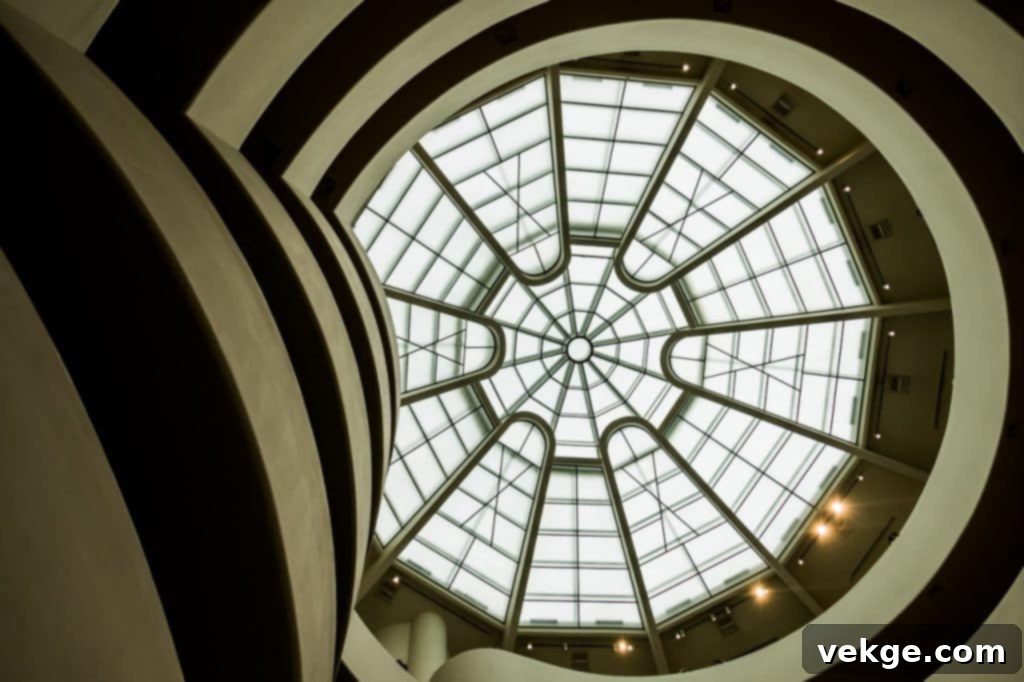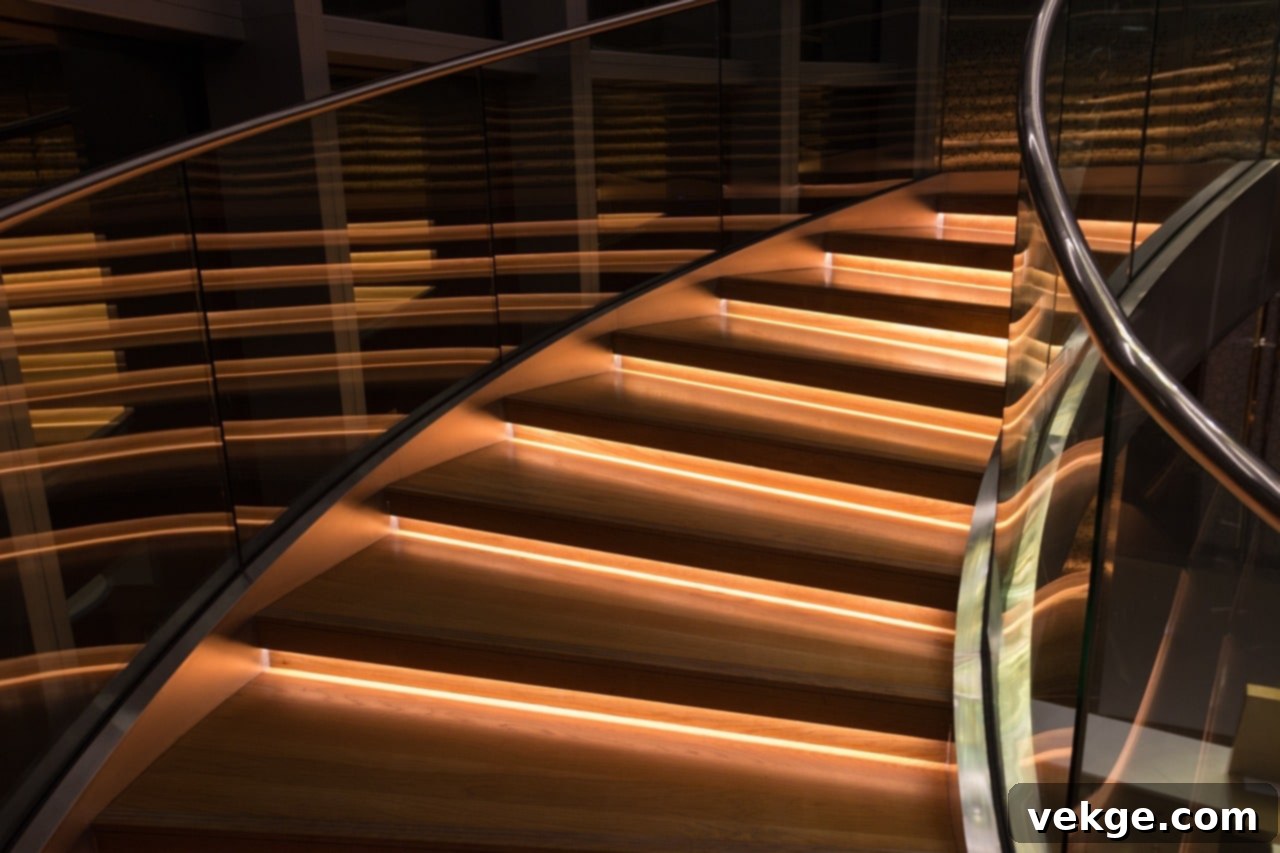Transform Your Home: The Revolutionary Benefits of Glass Curving in Modern Design
In the evolving landscape of contemporary home design, an exciting trend has taken center stage: the innovative incorporation of glass curving. This sophisticated technique, where glass is meticulously shaped into smooth, elegant curved forms, stands as a testament to remarkable technological advancements blended with profound creative architectural expression. Far from being merely an aesthetic embellishment, curved glass is actively redefining interior and exterior spaces, significantly enhancing natural light penetration, and introducing an unparalleled sense of fluidity and organic movement into various design elements. The creation of these exquisite curved glass units is a precise art, involving rapid heating and careful molding over custom metal templates within specialized kiln baths, resulting in a unique fusion of advanced engineering and artistic craftsmanship.
The allure of curved glass extends beyond its visual appeal. It represents a paradigm shift in how we conceive and interact with architectural spaces, offering solutions that traditional flat glass simply cannot. From sweeping facades to intimate interior details, curved glass provides a canvas for designers to push boundaries and create environments that are both visually stunning and functionally superior. This article delves into the multifaceted benefits of integrating glass curving into your home design, exploring how it elevates aesthetics, enhances structural integrity, and unlocks new dimensions of design versatility, ultimately making your living space truly exceptional.
Elevating Home Aesthetics with Contemporary Curved Glass
The foremost appeal of integrating glass curving into modern home design undoubtedly lies in its remarkable ability to elevate the overall aesthetic of a space, imbuing it with a distinct sense of modernity and sophistication. Curved glass introduces a dynamic, sculptural quality that flat glass or other conventional materials simply cannot replicate. Its smooth, continuous lines create a seamless flow, softening harsh edges and fostering an inviting, expansive atmosphere within any room. This visual fluidity is crucial in contemporary design, where open concepts and minimalist aesthetics reign supreme.
One of the most striking and beneficial applications of curved glass is in the form of innovative skylights. These magnificent architectural features, crafted from curved glass, transcend their role as mere windows. They serve as stunning visual focal points, drawing the eye upwards and creating a sense of grandeur. More importantly, curved glass skylights play a profound practical role in saturating the home with abundant natural light, effectively transforming dark corners into vibrant, airy spaces. The gentle arc of the glass can help diffuse light more evenly, reducing glare while maximizing illumination, thereby creating an atmosphere that feels truly open and connected to the outdoors.

This infusion of natural light is more than just a visual perk; it carries significant psychological and physiological benefits. Studies have shown that exposure to natural light can profoundly enhance mood, boost productivity, regulate sleep patterns, and generally improve the overall well-being of residents. Homes designed with ample natural light feel more vibrant, welcoming, and alive. Furthermore, the seamless and fluid nature of curved glass complements a wide array of other design elements, from minimalist concrete to warm timber, allowing for a cohesive and integrated architectural language that resonates beautifully throughout the entire home. It can serve as a stunning focal point or blend harmoniously, always contributing to a sophisticated and refined aesthetic.
Enhanced Strength and Exceptional Durability of Curved Glass
A common misconception is that the curved shape of glass might compromise its inherent strength. However, the reality is quite the opposite; the sophisticated process of curving glass often significantly enhances its durability and structural integrity. The meticulous controlled heating and molding process within specialized kiln baths does more than just shape the glass; it also effectively tempers it. This tempering process involves rapidly cooling the outer surfaces of the glass while the interior remains hotter, creating compressive stresses on the surface and tensile stresses in the core. The result is glass that is several times stronger than annealed (untreated) glass, boasting increased resistance to thermal shock, stress, and impact.
This enhanced strength makes curved glass an incredibly reliable material choice, not only for its superior aesthetic qualities but also for its impressive robustness and longevity. Unlike flat glass, which can concentrate stress at corners or edges, the continuous curve of the glass helps distribute stress more evenly across its surface, making it less prone to breakage from localized impacts. This characteristic is particularly advantageous in various applications, from structural elements to protective barriers.
The inherent strength of curved glass is particularly beneficial in architectural applications exposed to harsh weather conditions, such as high winds, heavy snow loads, or seismic activity. Its ability to withstand significant environmental stressors without compromising on design or safety makes it an ideal choice for modern homes that prioritize both cutting-edge functionality and enduring style. Furthermore, in areas where safety is a paramount concern – think balustrades, railings, or overhead glazing – the tempered nature of curved glass ensures that, should it ever break, it shatters into small, relatively harmless granular pieces rather than large, jagged shards, significantly reducing the risk of injury. This combination of aesthetic appeal, structural integrity, and safety positions curved glass as a superior material for contemporary and future-proof home construction.
Unleashing Creativity: The Versatility of Curved Glass in Architectural Design
The unparalleled versatility of curved glass is truly a game-changer, opening up entirely new avenues in architectural and interior design. Its adaptable nature allows it to be integrated into an astonishing multitude of design needs, transforming ordinary spaces into extraordinary experiences and significantly improving curb appeal for exterior applications. Imagine elegant staircases featuring curved glass balustrades that seem to flow effortlessly between floors, creating a sense of lightness and openness. Or consider outdoor fixtures and expansive glass facades that blend seamlessly with the natural landscape, blurring the lines between indoor comfort and outdoor beauty, offering panoramic views without obstruction.
Beyond these grand statements, curved glass also serves as an excellent and sophisticated material for creating interior partitions within homes. Whether it’s a gentle, sweeping divider between a living room and dining area, or a more pronounced curve for an office space, it offers a sense of subtle separation while meticulously maintaining an open, connected, and airy feel. This allows for flexible living arrangements without sacrificing light or visual continuity. Other innovative applications include curved shower enclosures that enhance luxury and space efficiency in bathrooms, artistic furniture elements like curved glass tabletops, and even intricate decorative panels that become true works of art.
This remarkable versatility extends deeply into the variety of shapes, radii, and sizes that curved glass can be molded into. The possibilities are virtually limitless, constrained only by the designer’s imagination and the structural requirements of the project. Whether a design calls for a subtle, gentle curve for a minimalist corner window, a dramatic, bold sweeping arc for a breathtaking entrance, or a complex multi-radius form for a bespoke architectural feature, curved glass can be meticulously crafted to meet precise specifications. This profound adaptability empowers architects and interior designers to transcend the limitations of traditional, linear designs, encouraging them to explore innovative, organic, and truly custom ways to enhance and define living spaces, making each home a unique expression of style and functionality.
Customization and Innovation with Curved Glass
Further enhancing its versatility, curved glass can be customized with various finishes, tints, and patterns, allowing designers even more creative freedom. Options include frosted, etched, sandblasted, or color-laminated glass, which can add privacy, reduce glare, or introduce specific aesthetic effects. This level of customization ensures that curved glass can perfectly complement any existing design scheme or become the defining feature of a new one. The ability to integrate technologies like smart glass (switchable privacy glass) into curved forms also opens doors for dynamic spaces that can adapt to different needs throughout the day, offering unprecedented flexibility and innovation in home automation and design.
The Sustainable and Future-Forward Aspect of Curved Glass
Beyond its aesthetic and structural advantages, curved glass also contributes positively to the sustainability profile of modern homes. Its ability to maximize natural light significantly reduces the reliance on artificial lighting during daylight hours, leading to lower energy consumption and reduced utility bills. Furthermore, advancements in glass technology have produced high-performance curved glass units with excellent thermal insulation properties, such as double or triple glazing with low-emissivity (low-e) coatings. These specialized units help regulate indoor temperatures, keeping homes cooler in summer and warmer in winter, thereby enhancing energy efficiency and reducing the overall carbon footprint of the building. The durability and longevity of curved glass also mean fewer replacements and less waste over the lifetime of the structure, aligning with sustainable building practices and contributing to a more environmentally conscious future for home design.
Conclusion: Curved Glass as a Pivotal Element in Modern Home Design
In summation, the benefits of incorporating glass curving into home design are indeed multifaceted and transformative. It transcends the realm of being merely an aesthetic choice; it stands as a highly functional, exceptionally durable, and remarkably versatile material that possesses the power to fundamentally alter the way we perceive and interact with our living spaces. The unique and advantageous properties of curved glass – ranging from its unparalleled ability to beautifully diffuse natural light and create bright, airy interiors, to its enhanced strength, longevity, and incredible adaptability to complex design requirements – make it an increasingly ideal and indispensable choice for contemporary homes seeking to push the boundaries of design and functionality.
As architectural techniques and material innovations continue to rapidly evolve, the widespread adoption and sophisticated application of curved glass in home design are not only likely to grow but are poised to continually reshape the very foundations of how we think about space, light, form, and flow within our built environments. Its remarkable capability to elegantly blend the boundaries between indoor and outdoor spaces, fostering a seamless connection with nature, coupled with its significant contribution to crafting more organic, fluid, and visually captivating living environments, firmly positions curved glass as a pivotal, forward-thinking, and enduring element in the lexicon of modern home design. Embracing curved glass means embracing a future where homes are not just structures, but dynamic, light-filled, and artistically inspired sanctuaries.
